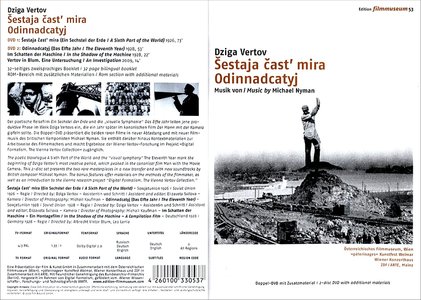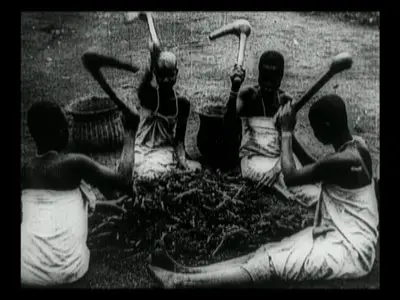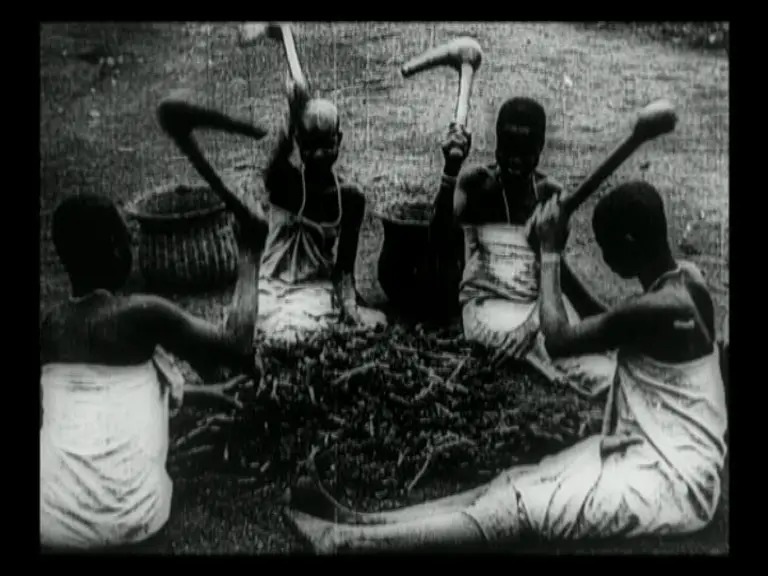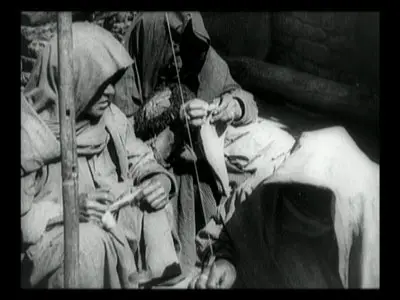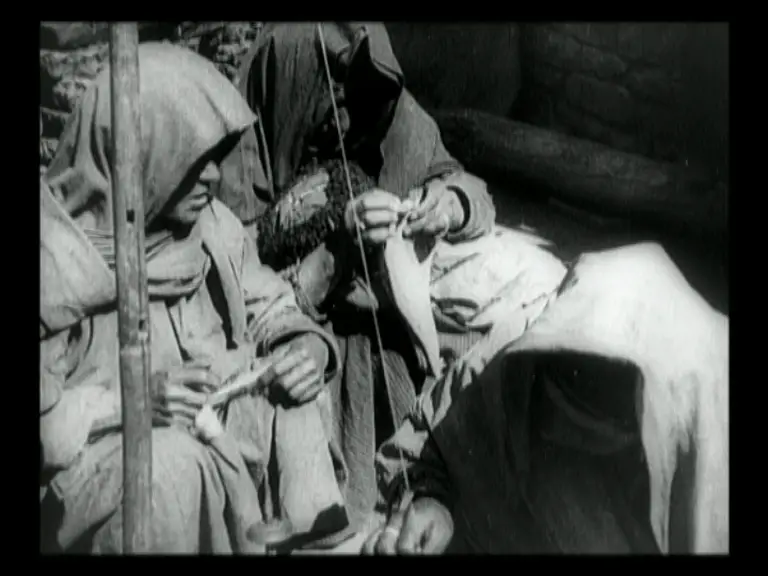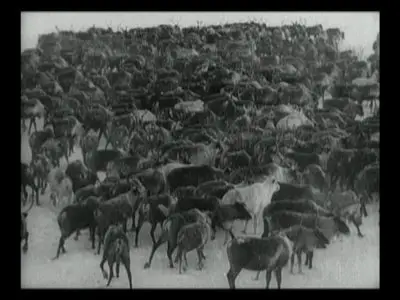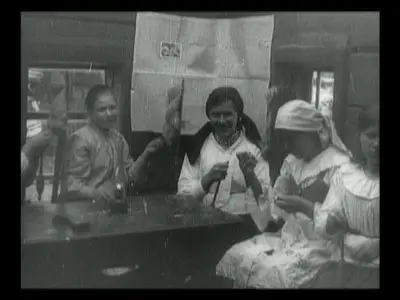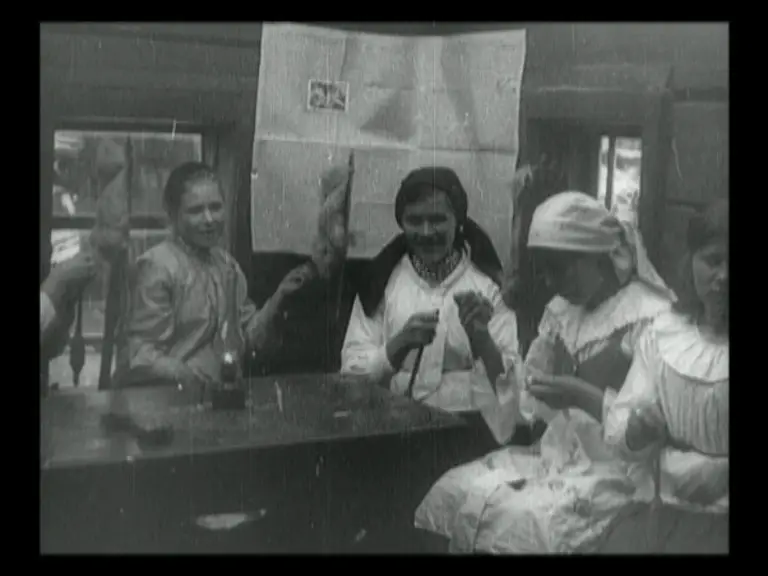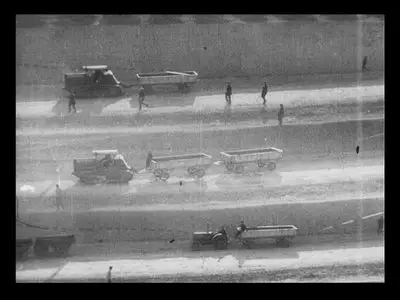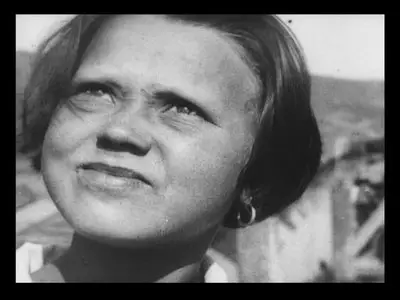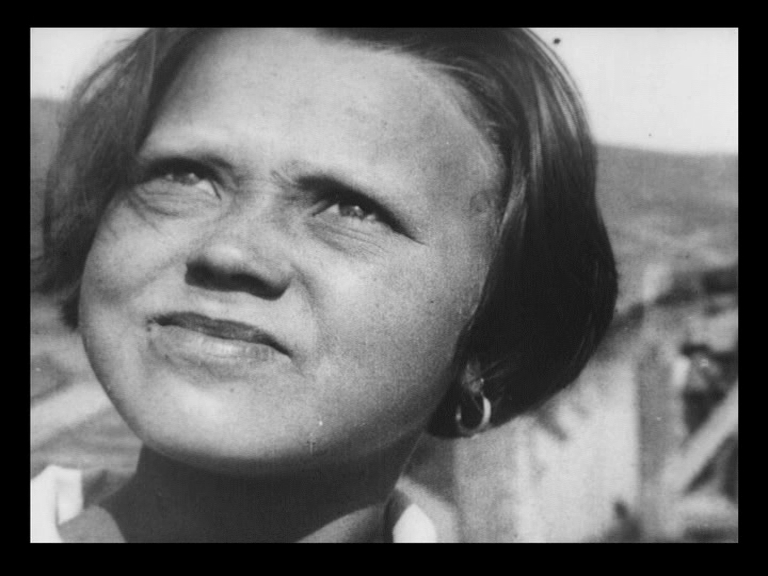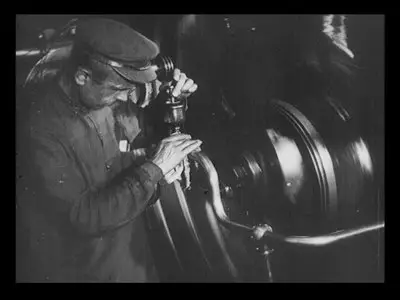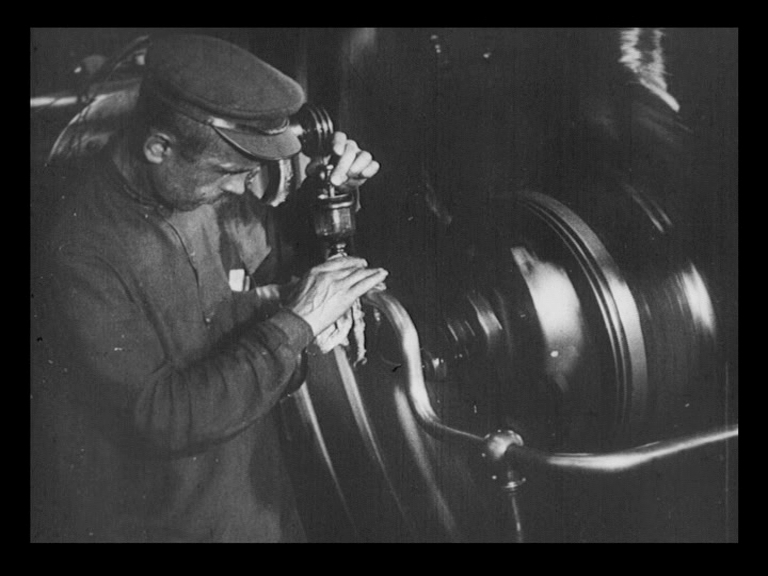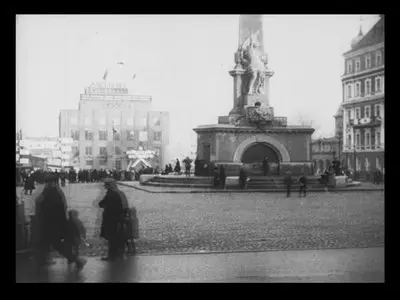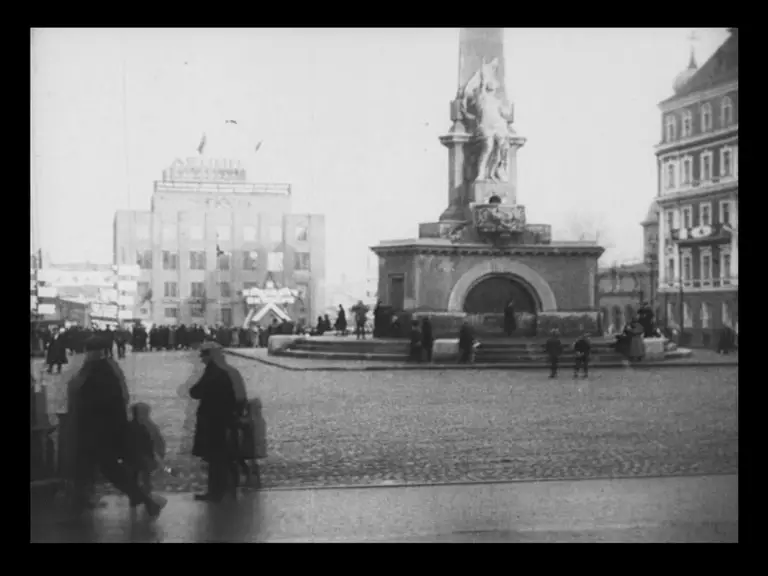A Sixth Part of the World (1926) & The Eleventh Year (1928)
A Films by Dziga Vertov
DVD5 + DVD9 | VIDEO_TS | PAL 4:3 | 01:14:08 + 00:52:49 | 3,58 Gb + 4,64 Gb
Silent or Michael Nyman's Score AC3 2.0 @ 224 Kbps with Русский intertitles
Subs: Deutsch, English
Genre: Documentary, Avant-garde
A Films by Dziga Vertov
DVD5 + DVD9 | VIDEO_TS | PAL 4:3 | 01:14:08 + 00:52:49 | 3,58 Gb + 4,64 Gb
Silent or Michael Nyman's Score AC3 2.0 @ 224 Kbps with Русский intertitles
Subs: Deutsch, English
Genre: Documentary, Avant-garde
The poetic travelogue A Sixth Part of the World and the "visual symphony" The Eleventh Year mark the beginning of Dziga Vertov's most creative period, which peaked in the canonical film Man with the Movie Camera. This 2-disc set presents the two rare masterpieces in a new transfer and with new soundtracks by British composer Michael Nyman. The bonus features offer materials on the methods of the filmmaker, as well as an introduction to the Vienna research project on Vertov, "Digital Formalism."
A Sixth Part of the World (1926) - IMDB
The Eleventh Year (1928) - IMDB
The Edition Filmmuseum label was set up in late 2005, offering up Dziga Vertov’s 1930 early sound experiment Entuziazm (Simfonija Donbassa) as its inaugural release. The film was a welcome addition to many a DVD shelf given the scarcity of much of Vertov’s work. Only his 1929 masterpiece Man With a Movie Camera had been easily accessible - in the UK it had been released on VHS by the BFI and, subsequently, three DVD packages. Just over four years later, in December 2009, Edition Filmmuseum returned to Vertov for a new double-disc package, this time collecting some rarer still material: A Sixth Part of the World from 1926 and The Eleventh Year from 1928, both presented in new HD transfers from restored 35mm prints.
Having been made prior to Man With a Movie Camera, both A Sixth Part and The Eleventh Year serve as a valuable insight into how Vertov reached the heights of that 1929 effort. As this set’s sleeve notes profess, these two works “mark the beginning of [his] most creative period”. Indeed, footage from both would figure in Man With a Movie Camera and as such can clearly be viewed as stepping stones towards his masterpiece. Yet whereas the later work was a primarily a “city symphony” and a self-reflexive look at the art and function of filmmaking - in other words, essentially free of political subtexts - A Sixth Part and The Eleventh Year are both explicit examples of Soviet propaganda. The former serves as an epic extolling of collectivism, moving outside of the capital and European Russia to document its various far-flung corners. (The title, of course, making reference to its size in comparison to the rest of the world.) The latter, on the other hand, celebrates the decade since the October Revolution of 1917 and proclaims its ongoing strides.
Arguably, such propagandist concerns work in Vertov’s favour. It may seem an unlikely analogy, yet I was particularly reminded of such Humphrey Jennings WWII shorts as Listen to Britain and Words for Battle whilst watching these two films. As with Jennings’ paeans to British spirit, both A Sixth Part and The Eleventh Year allow their director a free reign when it comes to handling the material. Essentially, the remit is quite simple - as exemplified by the ability to sum up each in a single sentence - and as such the films are able present their ‘message’ without it either complicating or interfering with the more cinematic concerns. Just as Listen to Britain and Words for Battle act as superb examples of visual poetry, so too A Sixth Part and The Eleventh Year become filmic “symphonies” in the manner of Man With a Movie Camera.
It should perhaps go without saying, then, that Vertov’s visual eye is as keen as the one he so perfectly demonstrated in his later works. This set is full of wonderfully observed details, from reindeer races to sheep being washed in the sea. Moreover, the fact that A Sixth Part, especially, took its camera to lesser documented areas (Siberia, the Chinese-Russian border) allows for a wealth of rare glimpses into what seems like a completely different world. Indeed, A Sixth Part could almost serve as a straightforward travelogue, collating as it does so much ethnographic and anthropological detail. Yet such a description arguably undervalues the works.
The various tricks and techniques that played such a prominent part in Man With a Movie Camera get an early outing here, prompting some staggering images. To mention just two examples of split-screens and superimpositions as found in The Eleventh Year we see wonderfully busy crowd scenes (multiple images occupying the same frame thus filling the screen with dozens of faces) or the moment which Edition Filmmuseum have chosen as this set’s cover image: the towering presence of a worker over an entire landmass as though his exertions alone are providing the required labour - a perfect encapsulation of the individual/collective dichotomy the film’s message is espousing.
To quote a comment Jean-Pierre Gorin made in Sight and Sound in 1973, one which I also used when reviewing Man With a Movie Camera quite a few years back: “[Sergei] Eisenstein thought of himself as the inventor of montage, but in fact he was inventing camera angles. At the same moment Vertov was inventing editing.” In other words, the actual visuals are only part of Vertov’s technique; it is what he does with them that makes his films what they are. Furthermore, A Sixth Part and The Eleventh Year once again prove that this didn’t simply arrive fully formed in 1929. (As an aside I would argue that it is the greater ambition - and fully achieved ambition, at that - which elevate Man With a Movie Camera above these two works).
Certainly, Vertov can do standard editing practices - the explosives sequence in The Eleventh Year is as good an example of early narrative suspense techniques as you are likely to see. But then he could also pull something extraordinary out of the bag. The beginning of A Sixth Part throws out images of machines, a couple doing the foxtrot, slaves and more besides, initially to perplexing effect. Then slowly Vertov teases out the connections, adding associative footage that ties one disparate element to the other, counter pointing one image with another, until the message becomes clear. The level of command is really quite breathtaking, demonstration of a filmmaker in complete control of his material.
In this respect the presence of the Michael Nyman Band on both soundtracks is quite fitting. Nyman and his band had previously provided a new score for Man With a Movie Camera in 2002 (available on the BFI disc) to great effect and the same is true here. Nyman’s compositional techniques are not that removed from Vertov’s. The emphasis on rhythms, the slow build from potentially disparate elements; there is a clear kinship between the two. The result is that Nyman never overpowers the visuals, rather he complements them. The drive behind the editing that makes A Sixth Part such a breathless viewing experience is merely accentuated but never altered. I am unsure as to whether Vertov made visual notes for either film as per Man With a Movie Camera which were then interpreted by the Alloy Orchestra for the BFI’s first DVD release. Yet I doubt few will struggle to find favour with the offerings here - the addition of Nyman makes for a welcome grace note to a pair of fascinating films.The Digital Fix
Special Features:
DVD 1:
- Sestaja čast' mira 1926, 73'
- Music by Michael Nyman
- 32page bilingual booklet with essays by Barbara Wurm, Thomas Tode, Adelheid Heftberger, Aleksandr Derjabin, Michael Loebenstein, Alexander Horwath
DVD 2:
- Odinnadcatyj 1928, 53'
- Music by Michael Nyman
- Im Schatten der Maschine. Ein Montagefilm 1928, 22'
- Vertov in Blum. Eine Untersuchung 2009, 14'
- ROM section with additional documents and interactive applications about Vertov's "Phrases" in Odinnadcatyj, the film's intertitles, the "Blum Affair" and the projekt "Digital Formalism".
Many Thanks to Original uploader.
–––––––––––––––––––––––––––––––––––––––


